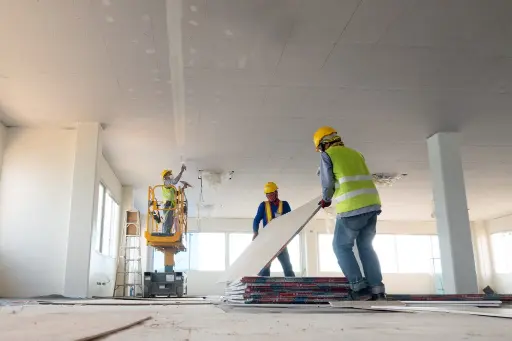
Introduction
Planning an interior design project is exciting, but without a clear budget, costs can spiral out of control. Whether you're decorating a single room or renovating your entire home, setting a realistic interior design budget is the key to a successful outcome. In this comprehensive guide, you'll learn how to allocate funds, choose the right design elements, and stay within your means without compromising style.
1. Why Budgeting for Interior Design Is Crucial
Budgeting ensures that your design goals align with your financial situation. It helps you:
- Prioritize spending
- Avoid unexpected expenses
- Make informed decisions
- Achieve the desired aesthetic within your limits
2. Understand Your Interior Design Goals
Start by answering these questions:
- Are you renovating or decorating?
- What’s your timeline?
- What’s the scale of the project?
- Which rooms are included?
- What’s the desired style?
Document your vision clearly it helps in estimating costs and communicating with designers or contractors.
3. Define Your Overall Budget
Evaluate your finances and decide how much you’re willing to invest. Remember to:
- Factor in a contingency (10–20%) for unexpected costs
- Determine whether you're paying out-of-pocket or through financing
4. Breakdown of Interior Design Costs
Here’s a typical cost structure:
| Expenses | Percentage of Budget |
|---|---|
| Design Fees | 10–20% |
| Furniture & Accessories | 30–40% |
| Renovations (Painting, Flooring, etc.) | 20–30% |
| Lighting | 5–10% |
| Labor | 10–15% |
| Contingency | 10–20% |
These percentages can vary depending on project scope and location.
[Insert Image: Pie chart of typical interior design budget breakdown – Alt Text: Home design budget allocation chart]
5. Set Priorities: Must-Haves vs. Nice-to-Haves
Identify where to splurge and where to save:
- Splurge on items that are used daily (sofa, bed, dining table)
- Save on décor elements and seasonal items
6. Get Interior Design Quotes
Approach multiple designers or firms and ask for detailed quotes. Evaluate based on:
- Portfolio quality
- Included services (3D designs, mood boards, site visits)
- Timeline and payment schedule
Pro Tip: Look for packages or bundled services for cost efficiency.
[Insert Image: Interior designer discussing with clients – Alt Text: Consulting interior designer for budget planning]
7. Plan Room-by-Room Budgets
Customize your budget for each space:
Living Room Budgeting
- Furniture
- Curtains
- Lighting
- Wall treatments
Kitchen Budgeting
- Cabinetry
- Countertops
- Backsplash
- Appliances
Bedroom Budgeting
- Wardrobes
- Bed and mattress
- Side tables
- Window treatments
Bathroom Budgeting
- Fixtures
- Tiles
- Lighting
[Insert Image: Stylish modern kitchen design – Alt Text: Budget kitchen renovation inspiration]
8. Consider DIY vs. Professional Services
DIY can save costs, but consider your skillset, time, and the complexity of the project. Tasks like electrical work or plumbing should always be done by certified professionals.
9. Shop Smart: Where to Save Money
- Look for online deals, discounts, and festive sales
- Buy in bulk (e.g., flooring materials, paint)
- Choose versatile, multi-use furniture
- Explore thrift stores and second-hand markets
10. Avoid These Common Budgeting Mistakes
- Not having a contingency fund
- Overlooking hidden costs (delivery, installation, permits)
- Not sticking to the plan
- Relying on assumptions instead of professional advice
[Insert Image: Furniture delivery or renovation chaos – Alt Text: Mistakes to avoid during interior design project]
11. Tools and Resources to Manage Your Budget
- Budget tracking apps (e.g., Mint, YNAB)
- Excel or Google Sheets
- Interior design budgeting templates
12. When and Where to Hire an Interior Designer
Hiring a designer can be an investment that saves money in the long run. Consider:
- Full-service design vs. consultation-only services
- Online interior design services for budget projects
13. Tracking Progress and Staying On Budget
- Maintain regular check-ins with contractors
- Update your budget weekly
- Keep receipts and invoices organized
[Insert Image: Homeowner reviewing invoices – Alt Text: Budget tracking for home design project]
14. Post-Project Evaluation
After completion:
- Compare final expenses to initial budget
- Note areas of overspending or smart savings
- Use these insights for future projects
Conclusion
A well-thought-out budget is the foundation of a successful interior design project. With proper planning, you can create a stylish, functional, and personalized space without financial strain. Stay focused, organized, and always leave room for the unexpected. Whether you’re working with an interior designer or handling it yourself, these budgeting tips ensure your project stays beautiful and affordable.
